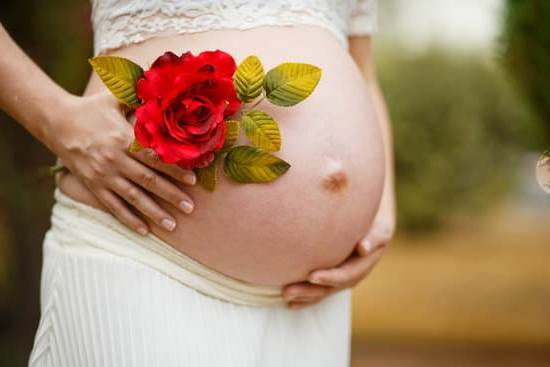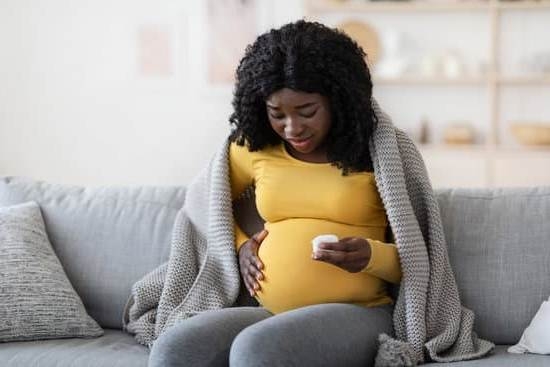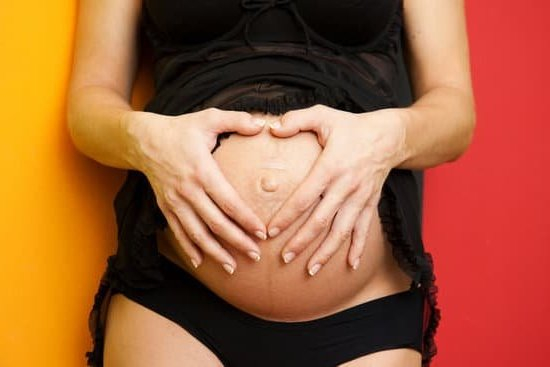Experiencing early pregnancy cramps can be a source of worry and concern for many expectant mothers. These cramps can often be mistaken for menstrual cramps, causing confusion and anxiety. In this article, we will delve into the topic of early pregnancy cramps, exploring what to expect, how to differentiate them from menstrual cramps, the causes behind them, signs and symptoms to look out for, coping mechanisms, when to seek medical help, and common misconceptions about early pregnancy cramps.
It is not uncommon for women in the early stages of pregnancy to experience cramping. It is essential to understand the difference between these cramps and menstrual cramps as they can vary significantly in intensity and duration. By gaining insight into the factors behind these cramps and learning about effective coping strategies, expectant mothers can navigate this aspect of early pregnancy with greater confidence.
Throughout this article, real stories from women who have experienced early pregnancy cramps will provide insight into their personal experiences. By acknowledging the concerns and experiences of others, we aim to offer support and guidance to those facing similar challenges during their pregnancy journey. Whether you are seeking remedies for relief or simply looking to gain a better understanding of early pregnancy cramps, this article will provide valuable information on what to expect during this crucial stage of prenatal development.
Differentiating Early Pregnancy Cramps From Menstrual Cramps
When it comes to early pregnancy, cramps can often be a cause for concern or confusion. Many women may mistake early pregnancy cramps for menstrual cramps, leading to anxiety and worry. Understanding the key differences between the two can provide reassurance and help women recognize when something might be amiss with their pregnancy.
Differentiating between early pregnancy cramps and menstrual cramps can be challenging, as they share some commonalities. However, there are a few key distinctions that can help distinguish between the two.
- Timing: Menstrual cramps typically occur just before or during your period, while early pregnancy cramps can happen at any time during the first trimester.
- Intensity and duration: Early pregnancy cramps are usually milder and shorter in duration compared to menstrual cramps, which can often be more intense and prolonged.
One important factor to consider is whether you have missed your period or experienced other early signs of pregnancy, such as breast tenderness or nausea. These additional symptoms along with mild, intermittent cramping could indicate that you are pregnant rather than experiencing typical premenstrual symptoms.
Causes of Differences Between Early Pregnancy and Menstrual Cramps
The causes behind early pregnancy cramps and menstrual cramps also differ. Menstrual cramps are primarily caused by the uterus contracting to shed its lining in preparation for menstruation. On the other hand, early pregnancy cramps are often attributed to the implantation process as the fertilized egg attaches itself to the uterine wall. This difference in physiological processes contributes to the variance in pain and timing between the two types of cramping.
In addition, hormonal changes associated with pregnancy can lead to mild uterine contractions and increased blood flow to the pelvic area, which may also contribute to early pregnancy cramping. Understanding these underlying factors can aid in recognizing whether your abdominal discomfort is related to your menstrual cycle or potential early signs of pregnancy.
Causes of Early Pregnancy Cramps
Early pregnancy cramps can be a cause of concern for many women, especially for those who are trying to conceive or have recently found out they are pregnant. These cramps are often caused by the changes happening in a woman’s body as it prepares for the growth and development of a baby.
One common cause of early pregnancy cramps is implantation, which occurs when the fertilized egg attaches itself to the uterine wall. This process can cause mild cramping and spotting, which is usually one of the earliest signs of pregnancy.
Another factor that contributes to early pregnancy cramps is the expansion of the uterus as the baby grows. As the uterus expands, it puts pressure on surrounding organs and ligaments, leading to discomfort and mild cramping. Additionally, hormonal changes during early pregnancy can also result in uterine contractions and cramping as the body adjusts to its new state.
In some cases, early pregnancy cramps may also be a sign of an underlying issue such as an ectopic pregnancy or a miscarriage. It is important to note that while mild cramping is normal in early pregnancy, severe or persistent cramps should not be ignored. It is crucial for women to pay attention to accompanying symptoms and seek medical help if they experience intense pain, heavy bleeding, or fever alongside their early pregnancy cramps.
| Cause | Effect |
|---|---|
| Implantation | Mild cramping and spotting |
| Uterus Expansion | Discomfort and mild cramping |
| Hormonal Changes | Uterine contractions and cramping |
| Underlying issues such as ectopic pregnanacy or miscarriage | Possible causes of more severe symptoms like intense pain or heavy bleeding with fever. |
Signs and Symptoms to Look Out for Alongside Cramps
When experiencing early pregnancy cramps, it’s important to pay attention to any other signs and symptoms that may accompany the discomfort. These can provide valuable insight into the cause of the cramps and help determine if medical attention is needed.
Spotting or Bleeding
One common symptom that may occur alongside early pregnancy cramps is spotting or light bleeding. This can be concerning for many women, as it could be a sign of a potential issue with the pregnancy. However, it’s essential to note that some light spotting can be normal in early pregnancy, particularly around the time when a woman would typically have her period.
Abdominal Pain
In addition to cramping, some women may also experience generalized abdominal pain. This discomfort may feel similar to menstrual cramps but can also be described as a dull ache or pressure in the lower abdomen. Pay attention to the location and intensity of the pain, as well as any additional symptoms like nausea or vomiting.
Changes in Breast Sensitivity
Early pregnancy can also bring about changes in breast sensitivity, including tenderness, swelling, and tingling sensations. Alongside cramping, these changes may indicate hormonal shifts associated with implantation and the early stages of pregnancy.
Monitoring these signs and symptoms alongside early pregnancy cramps can help you gain a better understanding of what your body is going through and guide you in making informed decisions about seeking medical advice or care.
Coping With Early Pregnancy Cramps
Early pregnancy can bring about a range of physical discomforts, including cramping. While mild cramping is often a normal part of early pregnancy as the uterus expands and the body adjusts to the changes, it can still cause distress for many women. Fortunately, there are several strategies that can help alleviate early pregnancy cramps and make this phase more manageable.
One of the most effective ways to cope with early pregnancy cramps is through rest and relaxation. Taking time to rest and avoiding strenuous activities can help reduce the intensity of cramps. Additionally, using heat packs or taking warm baths can provide relief by soothing tense muscles and promoting relaxation.
Another helpful tip for managing early pregnancy cramps is staying hydrated. Dehydration can exacerbate cramping, so it’s essential to drink plenty of water throughout the day. In some cases, consuming certain herbal teas such as chamomile or peppermint may also provide relief from cramps.
Furthermore, gentle exercise and stretching can be beneficial in easing early pregnancy cramps. Engaging in activities like prenatal yoga or going for walks can help improve circulation and alleviate tension in the body. However, it’s important to consult with a healthcare provider before starting any new exercise regimen during pregnancy.
| Tips for Coping | Remedies for Relief |
|---|---|
| Rest and relaxation | Heat packs or warm baths |
| Staying hydrated | Gentle exercise and stretching |
Knowing When to Seek Medical Help for Early Pregnancy Cramps
When it comes to early pregnancy cramps, it’s important to know when to seek medical help. While some cramping can be normal in early pregnancy as the uterus expands and adjusts to the growing fetus, there are times when cramps may indicate a more serious issue. Here are some signs that indicate you should seek medical attention:
- Severe or persistent cramping
- Cramping accompanied by heavy bleeding
- Cramping with dizziness or fainting
- Cramping with shoulder pain
- Cramping with fever or chills
If you experience any of these symptoms alongside early pregnancy cramps, it’s important to contact your healthcare provider immediately. These could be signs of an ectopic pregnancy, miscarriage, or other complications that require prompt medical attention.
In addition to the above signs, if you have a history of pregnancy complications or are at increased risk for certain conditions, it’s always best to err on the side of caution and consult with your healthcare provider about any concerns regarding early pregnancy cramps. It’s better to be proactive and seek medical guidance rather than ignore potential warning signs.
Common Misconceptions and Myths About Early Pregnancy Cramps
There are many misconceptions and myths surrounding early pregnancy cramps that can cause unnecessary worry and stress for expectant mothers. It is important to debunk these myths in order to provide accurate information and peace of mind to pregnant women.
Myth 1: Cramping in Early Pregnancy Means Miscarriage
One of the most common myths about early pregnancy cramps is that they always indicate a miscarriage. While it is true that cramping can be a sign of miscarriage, it is not always the case. In fact, many women experience mild cramping during the early stages of pregnancy as the uterus expands and adjusts to the growing fetus. It is important to consult with a healthcare provider to determine the cause of cramping and rule out any potential complications.
Myth 2: All Early Pregnancy Cramps Are the Same
Another misconception about early pregnancy cramps is that all cramps are equal and indicate the same thing. However, there are various causes of early pregnancy cramps, including implantation, uterine growth, or even gas and bloating. It is important for women to understand that not all cramping is cause for alarm, but it’s crucial to pay attention to other symptoms that may accompany the cramps.
Myth 3: Painful Cramping Always Signifies an Ectopic Pregnancy
While it is true that severe and persistent pain on one side of the abdomen can be a sign of an ectopic pregnancy, not all painful cramping necessarily indicates this condition. It’s important for women to be aware of their bodies and seek medical advice if they experience severe or unusual pain alongside other symptoms such as dizziness or heavy bleeding. Only through proper medical evaluation can any concerns be addressed.
Stories From Real Women
In conclusion, it is important to remember that every woman’s experience with early pregnancy cramps can be different. While some may experience mild discomfort, others may feel more intense pain. It’s crucial to pay attention to your body and listen to the signals it is giving you during this time.
Many women have shared their experiences with early pregnancy cramps, and while some have found them to be concerning, others have gone on to have healthy pregnancies without any issues. This goes to show that while cramping can be a symptom of concern, it is not always indicative of a problem.
If you are experiencing early pregnancy cramps, it’s essential to consult with a healthcare provider for guidance. They can assess your symptoms, provide medical advice, and offer peace of mind. Remember that seeking help early on can make a significant difference in managing any potential issues that may arise during your pregnancy.
Ultimately, while early pregnancy cramps can be worrisome, they are also a common occurrence for many women. By understanding what to expect, differentiating them from menstrual cramps, knowing when to seek medical help, and finding relief through coping strategies and remedies, you can navigate this aspect of your pregnancy journey with confidence and assurance.
Frequently Asked Questions
Can Early Pregnancy Feel Like Period Cramps?
Yes, early pregnancy can feel like period cramps for some women. This is due to the uterus stretching and growing to accommodate the developing embryo, which can cause mild cramping similar to menstrual cramps.
How Early Do Pregnancy Cramps Start?
Pregnancy cramps can start as early as one week after conception, although they are more commonly experienced around 6-12 days after the egg is fertilized. These cramps may feel like mild menstrual cramps and are often attributed to the implantation of the fertilized egg into the uterine lining.
Is It Normal to Have Stomach Cramps at 4 Weeks Pregnant?
It is absolutely normal to experience stomach cramps at 4 weeks pregnant. These cramps may feel similar to period cramps and are generally caused by the expanding uterus and hormonal changes in the body. However, if these cramps are severe or accompanied by heavy bleeding, it’s important to consult a healthcare provider for evaluation.

Welcome to my fertility blog. This is a space where I will be sharing my experiences as I navigate through the world of fertility treatments, as well as provide information and resources about fertility and pregnancy.





